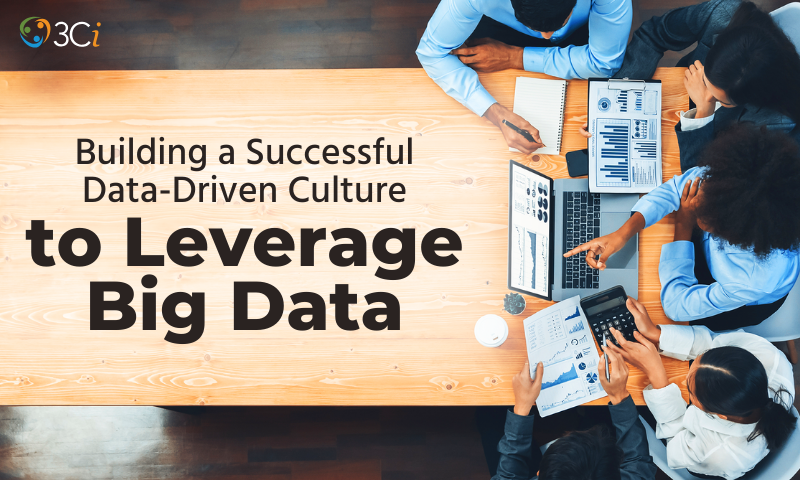Data-driven decision-making has become an essential part of strong organizational performance. From setting objectives and establishing strategies to tactical execution, business leaders need reliable data in order to lead their organizations toward success.
But while the trends show that most businesses are increasingly becoming more reliant on data, 91.9% of organizations achieved measurable value from data and analytics investments in 2023, and few have been able to fully capitalize on its power for optimal outcomes. That’s why it is crucial for business leaders to understand how best to leverage big data by building a successful culture around it.
Despite the growing availability of data, companies find it challenging to build a data culture for a variety of reasons. With the advent of big data, sophisticated analytical tools, and data visualization techniques, enterprises are discovering the importance of leveraging data to drive smarter business decisions.
However, the journey towards a data-driven culture is fraught with obstacles such as technical limitations, cultural resistance, and lack of stakeholder buy-in. It takes careful planning, continuous learning, and a persistent effort to create a culture that values and cultivates data expertise. In this article, we’ll share insights on how organizations can overcome them to develop an effective data-driven culture.
Defining Data-Driven Culture and its Benefits
In today’s fast-paced business world, data-driven culture has emerged as a vital component for sustained growth and success. Simply put, it implies an organizational culture that relies on data and insights to make informed decisions. 79.8% of leaders point to culture, people, process, or organization as the primary obstacle to becoming data-driven. With rapid changes in consumer preferences and market trends, businesses need to harness the power of data analytics to stay ahead of the competition.
This culture can help companies become more responsive, agile, and customer-centric. Data analysis offers valuable insights that can inform decision-making across all business functions. From identifying new growth prospects to improving operational efficiencies, a data-driven approach enables businesses to stay ahead of the curve and achieve sustainable growth. By embracing a data-driven culture, businesses can not only survive but also thrive in today’s dynamic market landscape.
For an organization to succeed, it is crucial to establish clear goals to guide decision-making and motivate employees. Not only do these goals provide direction for the company as a whole, but they also give each individual a sense of purpose and help them stay focused on what they need to accomplish.
Crafting a Data-Focused Mindset
Having a data-focused mindset is critical to success in nearly every industry. By prioritizing the collection, analysis, and utilization of data, individuals and organizations can make informed decisions and stay ahead of the competition.
However, adopting a data-focused mindset requires more than just an eagerness to collect raw information. It involves developing the skills and intuition to identify patterns and trends, approach problems analytically, and apply insights in truly meaningful ways.
For those who are willing to invest in these abilities, the rewards can be significant – from improved productivity and efficiency to more effective customer engagement and even breakthrough innovations. In short, becoming data-focused is a journey worth taking, and the benefits are boundless.
Educating Employees on Data Collection & Analysis
Not all employees understand the importance of data collection and analysis, let alone know how to do it correctly. That’s why it’s essential for companies to educate their employees on proper data handling techniques.
Six in 10 workers will require training before 2027, but only half of workers are seen to have access to adequate training opportunities today. The highest priority for skills training from 2023-2027 is analytical thinking, which is set to account for 10% of training initiatives, on average.
By providing employees with the necessary training and resources, companies can ensure that their data is clean, accurate, and useful. Educating employees on data collection and analysis can improve the quality of decisions made, help to identify areas for improvement, and lead to overall productivity gains. In today’s fast-paced business environment, it’s important to stay competitive, and having a well-trained workforce ready to handle your data needs is an essential part of it.
Utilizing Automation & Analytics Tools to Analyze Data Efficiently
As technology continues to advance, there is no doubt that the ability to analyze data efficiently is becoming increasingly important. The AI industry market is expected to be worth $266.92 billion by 2027. With the help of automation and analytics tools, businesses can now gather and analyze data faster than ever before.
Not only does this save valuable time, but it also allows businesses to make better decisions based on the insights gained from the data. This means that companies can respond to changes in the market more quickly, develop new products that better meet consumer needs, and create more effective marketing strategies. And with the continuous evolution of these tools, the possibilities for data analysis are endless. So, if you want to stay ahead of the curve and make the most of your data, harnessing the power of automation and analytics tools is essential.
To truly reap the rewards of a data-driven culture, it’s essential to identify objectives and invest in effective tools. While there will undoubtedly be challenges along the way, understanding the basics is key to creating an environment where data can be used to its full potential. Setting clear goals, formulating a data-focused mindset, educating employees on various processes, and investing in necessary automation tools are all positive steps in the right direction.
When all these components come together, organizations can benefit from better decision-making and improved customer satisfaction. With this strategy, companies can equip themselves with the tools needed to make more informed decisions throughout their organization and remain successful for years to come.

